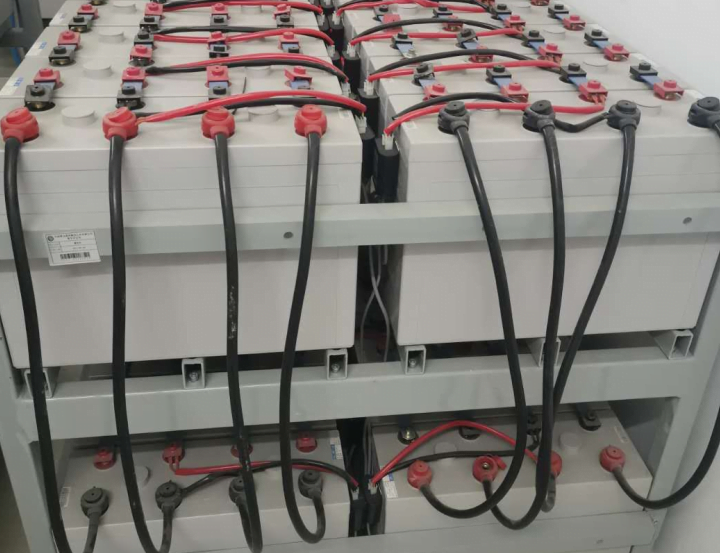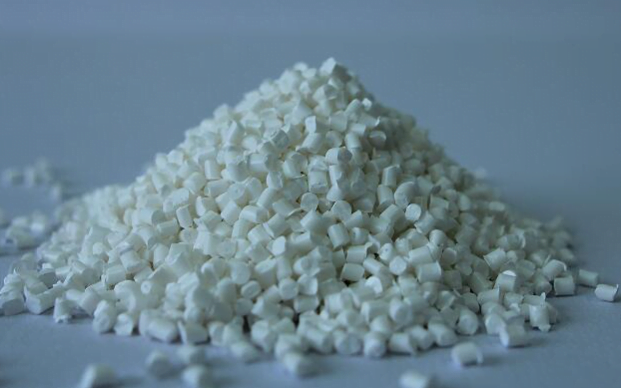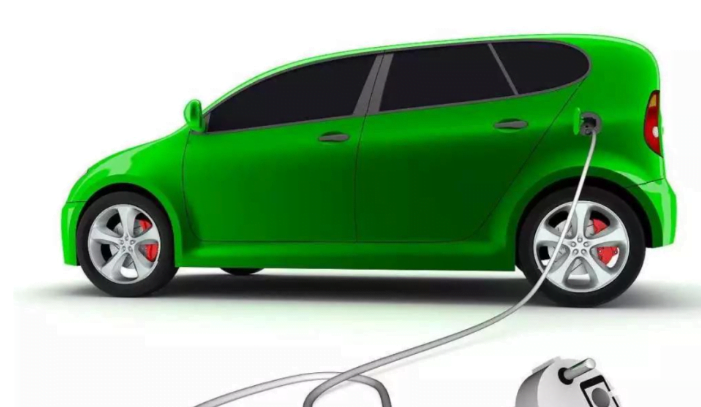With the rapid development of new energy vehicle industry scale and technology level, the safety issue becomes more and more prominent. The flame retardant polymer materials (such as PC/ABS, PP, PA, PBT, etc.) developed by CNCchinese are widely used in power batteries, which all meet the requirements of UL94 V0 grade flame retardant and reliable electrical performance, and have excellent performance in long-term physical durability, which can extend the service life of battery pack while improving the energy density of power battery, in line with the development concept of green, environmental protection and light weight of new energy vehicles. CNCchinese innovative materials will continue to protect the safety of new energy vehicles.
The high flammability rating of plastics has caused a lot of domestic and commercial accidents. Over 23% of domestic fire accidents start from plastic appliances such as television, radio, carpet, kitchen appliances, power adapters, etc.
What if there’s a way to reduce the flammability of plastics? This means fewer fire accidents! Here, you’ll learn in detail the importance of fire resistance and how flammability is rated. You’ll also learn extensively about flame-retardant plastic.
What are Fire Retardant Plastic Materials
Importantly, some engineering plastics, but more so Industrial insulation plastics, can be classified as ‘FR’. Or, fire retardant plastic materials and, flame resistant plastic. Certainly, no plastic exists that is completely a ‘fireproof plastic material’. Moreover, some plastics are inherently fire resistant, or, self-extinguishing. Essentially, do not need additives to meet their requirement. Others plastics though, need additives to meet the requirement of being ‘FR’ or ‘self-extinguishing’.Instrumentally, additives/compounds are added for a plastic material to have an improvement to its a flame-retardance. Furthermore, inhibit, vanquish and delay the combustion process. Also, these compounds are useful in the initial burning ignition stage of fire. So, the term flame retardant, refers to a material being, non flammable or inherently self extinguishing. Thus, making them suitable for use where fire protection is of great importance.
Importance of Fire Resistant Plastics
Plastics are undoubtedly one of the most important raw materials in part machining. However, one edge metal has over them is its lower tendency to catch fire. However, with fire-resistant plastics, their risk of flammability is reduced. Apart from their reduction inflammability, here are some other reasons why fire-resistant plastics are important:
Helps Make Parts Safer for Use
Plastics are one of the most widely used materials in part production. However, using them for parts where a lot of heat is involved might pose a problem due to their high flammability. This is not the case with plastics with a low flammability rating. Due to their ability to withstand fire to an extent, they help to further enhance the use of plastics for high-temperature applications and make them safer for use.
Helps to Protect the User of These Parts
When the part is safer to use, the user is also safe from fire hazards. Especially if the part is a component of a larger contraption, it is quite important to use fire-resistant plastics. This is because the fire from the plastic part could lead to a bigger fire if not quickly put out. This might put the part user at risk of carbon dioxide suffocation. The individual may also sustain heavy burns from the fire, which may lead to death as well. However, plastics with low flammability ratings help to prevent this. If there’s no fire outbreak, there’ll be no heavy combustion, and no one will suffer a heavy burn. Thus, fire-resistant plastics help to save lives.


The typical attributes for fire retardant plastic materials behaviour are:
- Firstly, Ignition.
- Secondly, Spread of flame.
- Thirdly, Heat release (or temperature rise).
- Next, Smoke development.
- And Finally, Smoke toxicity.
Undoubtedly, these attributes are critical. Moreover, in area’s where the spread of toxic fumes or flame. Such as, Aerospace, Marine and Rail. The term ‘UL’ is a plastics flammability standard released by the Underwriters Laboratories . Essentially, the standard classifies plastics according to how they burn in various orientations and part thicknesses from the lowest flame-retardant to most flame-retardant in six different classifications.
How to Determine Fire Resistant Level
As much as fire-resistant plastics are important in machining, you must be able to know the degree of their fire resistance before use. This is where UL94 comes into play. UL 94 is one of the most widely accepted plastic flammability testing standards. It is released by independent Underwriters Laboratories of the United States, where it got its acronym (UL). It is a standard that determines the tendency of a material to either ignite or spread the flame once it is ignited.
Therefore, UL ratings are given based on the material burn times, horizontal or vertical burn distance, and the time required for the flame to extinguish. Different samples of similar materials might have different UL 94 results due to their thickness. For instance, the time required for a plastic of 2mm thickness to extinguish will differ from the time needed for the same plastic of 10mm thickness to extinguish. The former will require a lesser time, while the latter will take more time.
so, broadly speaking, the most accepted industry standard for fire rating is UL. The USA Underwriters Laboratories (UL). Essentially, classifies plastics according to how they burn in various orientations per part thicknesses. Hence, UL 94 is a plastics flammability standard released by them . Crucially, a standard from the lowest flame-retardant to most flame-retardant. Thus, in six different classifications. Also, It’s worth noting, thicknesses can drastically change your part’s UL rating. Thus, UL ratings are measured at various ranges of sheet thickness. So, if you were looking for a UL 94 V-0 plastic material, for a component part, pay close attention to wall thickness and material selection.
There are six UL94 fire-retardant ratings, and they include (From the most fire-retardant to the least fire-retardant):
- 5VA: burning doesn’t exceed 60 seconds on a vertical specimen. It doesn’t allow any drip. Plaque specimens may develop no holes.
- 5VB: burning doesn’t exceed 60 seconds on a vertical specimen. It doesn’t allow any drip. There may be a hole in the plaque specimen.
- V-0: burning doesn’t exceed 10 seconds on a vertical specimen. It allows drips of flaming particles as long as they’re not inflamed.
- V-1: burning doesn’t exceed 30 seconds on a vertical specimen. It allows drips of flaming particles as long as they’re not inflamed.
- V-2: burning doesn’t exceed 30 seconds on a vertical specimen. It allows drips of flaming particles.
- HB: has a burning rate of < 76 mm/min for thickness < 3 mm. Burning stops before 100 mm. It features slow burning on horizontal samples.
The image below gives a visual representation of the UL-94 rating
Some plastics don’t meet the requirement of 5VA, 5VB, and V-0. To meet these criteria, plastics need additives. However, it will add to the manufacturing cost. Thus, it is often not desirable. It also tends to affect the plastic’s mechanical properties and cause other manufacturing issues.
Further Standards
In addition to UL, the European Flame Retardants Association, EFRA, are the association representing major EU companies. Inherently, those that manufacture or market flame retardants in Europe. Also, closer to home, the relevant British and international standards are BS 2782 Part 1 Method 140A:1992 and its ISO equivalent, ISO 1210:1992.Similarly, a standard specifically designed for the design of systems used in clean rooms is, FM 4910 certification is introduced. Crucially, to comply with the high fire behaviour requirements that FM Global places on approval in clean rooms.Please note, for a machined fabricated plastic material that meets a particular countries or industries standard, please do get in touch. And, if our team can not advise, we can certainly put you in touch with the manufacturer or supplier of the specific fire retardant plastic materials.
Polypropylene is an economical material that offers a combination of outstanding physical, mechanical, thermal, and electrical properties not found in any other thermoplastic. Noted for its excellent chemical resistance in corrosive environments, polypropylene provides excellent resistance to organic solvents, degreasing agents and electrolytic attack. It is light in weight, resistant to staining, and has a low moisture absorption rate.
Flame retardant grades of polypropylene have various UL ratings. They are more expensive and, because of the addition of the flame retardant fillers, they have lower physical properties and fabricating qualities. Flame retardant clad polypropylene has two outside skin sheets of flame retardant polypropylene that are coextruded onto a center core of polypropylene. This provides a composite material that is tough and with flame retardant exterior surfaces.


New Material Focus: Nylon Sustamid 6 FR (PA6) DIN EN 45545-2:2013
A Nylon material, which meets the relevant requirements of the new European Rail Vehicle Standard DIN EN 45545-2:2013. Thus, allows for the production of various-sized machined components and component parts in small piece numbers. At the same time, the material possesses a high degree of stiffness, tensile strength as well as good sliding and wear properties with simultaneously outstanding corrosion and chemical resistance.Thus:
- Free of halogen and phosphorus
- Flame retardant and self-extinguishing
- High hardness and rigidity
- good slide and wear behavior
- Good machinability
- meets the relevant requirements of the new European Rail Vehicle Standard DIN EN 45545-2:2013
- High dimensional stability
Furthermore, this plastic material boasts a very high LOI (Limiting Oxygen Index) of 40% and is halogen free. With a UL94- V0 fire rating. In addition the low density (1.17g/cm³) provides significant weight and construction benefits in comparison to conventional material, like steel (7.85g/cm³). Capable of Short Term Temp up to 320 F / 160 CEvaluated to the following, CNCchinese 6 FR is ideal for use in the aerospace industry:1 ASTM E162 Flame spread
2 >ASTM E662 Smoke density
3 >ASTM E1354 Chloric count
4 BSS 7239 Smoke/toxicity
5 FAR 25.853 and FAR 28.855
6 SMP 800 C ToxicityImportantly, our emphasis has always been on the importance of offering a comprehensive plastic machining & fabrication & workshop. Reliably, able to manufacture component parts to customers exacting requirements. Most notably, many plastic companies only machining specific Plastics. Whereas, Sentinel Plastics has a comprehensive knowledge on all types of plastics and the required methods of manufacture.
Standard Engineering Plastic Materials UL Ratings
- ABS – HB
- Acrylic – HB
- Polycarbonate – V-2
- PVDF – V-0
- Acetal – HB
- Delrin – HB
- Nylon 6 – HB
- Nylon 6.6 – HB
- HDPE – HB
- PET (Polyester) – HB
- Polypropylene – HB
- PTFE – V-0
- PEEK – V-0
- PVC – V-0
- UHMWPE – HB
How to Select Flame Retardant Plastics for your Product
Most plastics are naturally flammable. However, you reduce their flammability tendency by including additives in their makeup. These additives are made of chemical compounds that help to inhibit or retard plastic ignition or burning. However, you’re probably wondering how exactly these additives make plastics fire-resistant.
These compounds help to keep plastic stable under heat stress and prevent it from combusting. Therefore, flame retardant plastics can withstand heat stress without easily combusting. Fire burns in the presence of three basic elements, oxygen, fuel, and heat. Hence, the science of flame retardant is that they initiate a chemical reaction that helps moderate any or all of these elements. They also release water to prevent the plastic from burning.
How Fire Resistant Plastics Reduce Flammability
Here are some proven ways by which fire-resistant plastics can achieve a lower flammability rating:
- Increase the plastic’s ignition resistance: plastics possess a high ignition property. They serve as fuel for a fire. Now, imagine reversing this equation such that they have low ignition property. That is precisely what plastics with low flammability ratings do. It increases their ignition resistance, making them unsuitable for burning.
- Hinders the speed of flame spread: fires continue to burn when they interact with other flammable materials around. Flame retardant compounds help to reduce such speed. Once the fire gets to the flame retardant plastic, it hits a break and prevents it from expanding to other materials. This helps to prevent further damage and makes putting off the fire easier.
- Reduce smoke and fume generation: the more materials that burn, the higher the smoke generation. On the other hand, the lesser the materials that burn, the lesser the smoke generation. As a consequence of preventing further burning of plastic materials, flame retardant thermoplastic helps to reduce smoke and fume generation.
Flame retardant plastics play essential roles in fire protection. A very good example of such fire-resistant plastics includes CNCchinese.
However, you should also consider the side effects of these fire-resistant plastics when choosing them. This is because most flame retardants can also cause some toxic and expensive problems. Some of these side effects include:
- Some flame retardants vaporize and can get into your manufactured products
- Might release toxic decomposition products
- Some flame retardant plastics are expensive and can add to your cost of production
Thus, these are the essential factors you should consider before choosing flame retardant plastics for your products.


What are the performance requirements of flame-retardant plastics used in new energy vehicles?
In recent years, in the context of the blowout development of new energy vehicles, some new energy vehicles have successively suffered fire and explosion accidents of lithium batteries. This is worthy of our alert to the safety of these new energy batteries. Although these accidents have a certain degree of particularity, the safety of new energy vehicles is worth paying attention to.
Different from plastics used in fuel vehicles, plastics used in new energy vehicles often need to work at higher voltages, currents and electrical power, which requires plastic materials to have better flame retardant and electrical properties. At present, the core of plastic applications for new energy vehicles is mainly concentrated in the fields of motors (coils, controller housings), battery packs (battery housings), and automotive electronics.
The specific performance requirements of new energy vehicles for flame-retardant plastic materials mainly include the following four aspects:
1. Flame retardant performance
UL94: V0/V2
Glowing wire test 30s 750/850℃
Ball compression hardness test 75/125℃
2. Thermomechanical properties
-40℃-85℃
Vibration, thermal shock, mechanical shock
3. Resistant to chemical contact
Water, salt
Electrolyte
Lubricant, dust
4. Electrical performance
Electrical insulation strength (>4KV)
Leakage prevention (>250V)
The common flame retardant components of new energy vehicles
Many parts of the car will use flame retardant materials, especially new energy vehicles, the application of flame retardant materials is more extensive. Especially in charging piles and battery parts, plastic parts are required to be flame retardant. Today, let’s take a look at the common flame retardant materials and corresponding components on automobiles.
Speaking of new energy vehicles, this is one of the hottest areas in recent years. For the material person, the most important thing is probably the application of new materials on the car. Compared with traditional cars, new energy vehicles have very different materials selection. For example, battery modules, charging piles, and charging guns must be made of flame-retardant materials. Let ’s take a look Look!
First, the charging gun
As a charging connector for electric vehicles, the charging gun is a “bridge” that connects charging facilities such as charging piles and electric vehicles. The quality of the gun directly affects the charging performance and safety. The material requirements of the charging gun are relatively high. Common materials are: PBT + GF, PA + GF, weather-resistant PC, etc.
Second, plug and socket
The material of the socket plug is mainly PBT-GF25 FR / PBT-GF30 FR, PA66-GF25 FR / PA66-GF30 FR and PA66-GF25 FR / PA66-GF30 FR (Free of halogen).
Third, the shell
The shell of charging pile is generally made of flame retardant PC material. The material features are halogen-free flame retardant, high surface gloss, excellent electrical insulation performance, and excellent mechanical properties.
Fourth, other components
There is currently no uniform material use standard for charging piles. By comparing the environmental requirements of charging piles with products from other industries, we recommend material solutions:
1. Power module case material-similar to power tool battery case-PA66 + FR material;
2. The internal cooling fan of the pile-PBT + GF or PPE + GF material, generally use axial flow fan blades;
3. Internal break control system of pile body-MCB or MCCB material-halogen-free flame retardant nylon material;
4. Metal isolation support inside the DC pile body-plastic instead of steel-ultra high glass fiber reinforced material or flame retardant reinforced nylon material.
Fifth, the battery module shell
Battery pack shells can generally be made of steel, aluminum alloy, SMC composite materials, carbon fiber reinforced composite materials, LGF-PP, PBT / ASA, etc.
Due to its good overall performance, plastic case is the main development direction of current battery case materials. For example, the series lithium batteries produced by companies such as Lei Tian, Huanyu, AVIC Lithium, Haiba, Qingshan and other companies are plastic cases. It is reported that in the power battery standard, the battery casing and the battery body are required to have a corresponding clear flame retardant requirement, and now more and more companies have begun to use flame retardant plastics for power batteries.
Sixth, automotive connectors
The basic requirements of connector materials: heat resistance and flame retardant! Connector contacts are metal, high mating times, and the material must have good flame resistance, heat resistance, and avoid fire. At present, common materials for connectors are PBT, PPS , PA, PPE, PET, etc


Flame-retardant Composites at Home in Electric Vehicles
Due to the major potential applications of Tepex in powertrains of electric vehicles, Bond-Laminates has used its own test setup to comprehensively investigate the fire behavior of overmolded, polyamide-6-based Tepex. A “HiAnt carrier” was used. This is a U-shaped profile made of Tepex, the inside of which is reinforced with crosswise ribs made of various polyamide 6 types such as Durethan, with or without a flame-retardant package. This practical test specimen is exposed to a 900°C flame in six positions for between 30 seconds and five minutes – for instance, on the polyamide ribs or on areas that have not been overmolded.
Non-flame-retardant Tepex again confirmed its inherently excellent fire resistance in this test. This is because only the molded rib material is burning after five minutes of flame treatment – and only when it is not equipped with special flame retardants. By contrast, if the ribs and overmolded areas made from a flame-retardant polyamide pass the test, the flames do not spread from the site of the fire treatment, but rather die when the burner is removed. “So, using non-flame-retardant Tepex with a flame-retardant injection molding material offers a very substantial safety margin for the design of flame-retardant components. We see enormous potential for this material combination to be applied in high-voltage battery components such as housings and partitions, but also in floor plates for inductive battery charging systems,” says CNCchinese
Some Specific ‘FR’ UL94 VO Rated Fire Retardant Plastic Materials Machined
- To begin with, Fire Retardant ABS Sheet – With, excellent fire ignition resistance. Thus. certified UL94 VO classification. Along with the fire rating, flame retardant ABS is high in rigidity and impact strength and has excellent chemical and abrasion resistance.
- Next, PVC sheet, UL DIN 4102 B1 flame resistance. Also, self-extinguishing, excellent chemical resistance, high mechanical and tensile strength.
- Also Popular,F2000. Essentially, a classified UL94 VO flame retardant transparent polycarbonate sheet.
- Flame Retardant ABS Sheet has a UL94 VO fire rating classification, meaning it has excellent fire ignition resistance.
- G-10/FR4 is a continuous woven glass fabric laminated with an epoxy resin, has a UL94 VO fire rating classification. Note: G-10 and FR4 are two separate materials.
- PEEK comes in many grades and forms. Thus, several grades that meet UL-94 Flame Class.
- Nylon 6 sheet – flame retardant tested to the new EU rail vehicle standard (DIN EN 45545-2:2013) and is rated to UL94 V-0.
- EM42 highly flame retardant, halogen free, low smoke, low toxic epoxy laminate, approved by London Underground meets the requirements of UL94V0 fire rating.
- GPO3 is a PGM composite sheet produced from glass mat and polyester resin.Flammability Category (≥4mm) UL94V0.
Need Plastic Machining Help
Also, upon request, also able to assist you with the configuration and design of your Machined Plastic Components. We know what different Plastics can do and which types of processing are practicable from a technology perspective. As such, we provide you with the support from the selection of Material to the design on the most advanced CAD systems. Finally, to the precise Machining and customisation of a Part that will function optimally for four application.
In Summary
Finally, here we are versatile and very Experienced. For any requirements we always aim to be as helpful as possible. When molding or extruding is not a viable option, then we can help!



